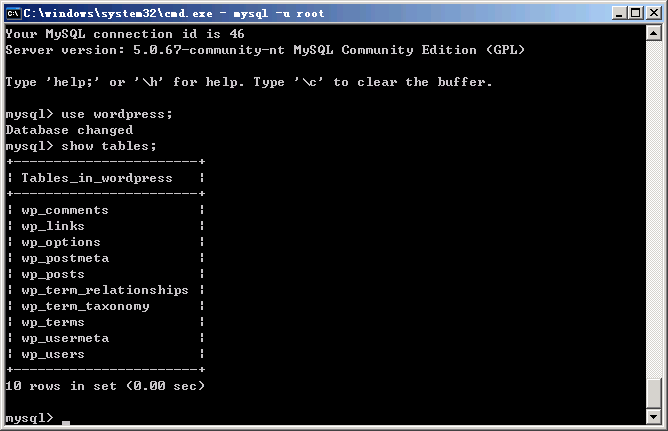

In this MySQL Insert example, we add one record to the sales details using the command prompt.Executing the above script in MySQL workbench against the myflixdb gives us the results shown below. Let us see whether the query added the selected data into the destination table or not.
#MYSQL SYNTAX CODE#
We are not going to explain the code implementation at this point. WHERE Continent = 'Asia' AND Region = 'Southern and Central Asia' SELECT Code, Name, Continent, Region, SurfaceArea, IndepYear, Population, LocalName, Capital

(Code, Name, Continent, Region, SurfaceArea, IndepYear, Population, LocalName, Capital) Here, we are going to restrict the rows using the WHERE Clause. In this example, we select rows from the country and load them into the countrydetails. Instead of hard coding all the values, you can use INSERTINTO SELECT Statement to put rows from one table to another. TIP: When you are putting a few records into the table, you must define the column names. NULL values added for the remaining columns The above query loads data into First_Name, Last name, Education, and Sales columns. (First_Name, Last_Name, Education, Sales)

In this MySQL insert statement example, we put a few column values into the company.
#MYSQL SYNTAX UPDATE#
You can omit a few columns while loading and update them later. It is not mandatory to put all the column values at one go. Let us the records present in the customer The following MySQL Insert query is the most popular way to load multiple records into a table. Here, we use UNION ALL (or UNION) to load multiple records into the company. In this example, we add multiple rows into the customer in a more traditional way. Whenever you omit the field names, you must specify the column_values in the order determined by the destination table structure. The above MySQL Insert queries put data into First_Name, Last_Name, Education, Occupation, Yearly_Income, and Sales columns. TIP: It is not a good habit to ignore the column names in these statement. It means the above MySQL statement can also write as: Please refer to Create Table article.Īs we said above, If you are loading data for all the existing columns, then ignore the column names (Syntax 2). Because it is an auto-increment column, and it updates automatically. NOTE: Here, we haven’t loaded the CustID value. (First_Name, Last_Name, Education, Profession, Yearly_Income, Sales) In this MySQL Insert Statement example, we are going to load a new record into the customers. If you are loading values for all the columns in the destination, then remove the (Column1, Column2,…, ColumnN) from the above syntax. If you omit the field names, you must specify the values (i.e., filed values) in the order defined by the destination table structure For instance, Column1_Value to load in Column1. Column1_Value…ColumnN_Value: Please specify the values that you want to insert by MySQL.Column1…ColumnN: It allows us to choose the number of columns from the table.DestinationTable: Provide a fully qualified name in which you want to load records.VALUES (Column1_Value, Column2_Value., ColumnN_Value) The basic syntax of the MySQL Insert statement is as shown below: INSERT INTO Destination Table To demonstrate the Insert Query in MySQL, we use the tables that we created in our previous post. The MySQL Insert statement is to load or add new records into a table.


 0 kommentar(er)
0 kommentar(er)
